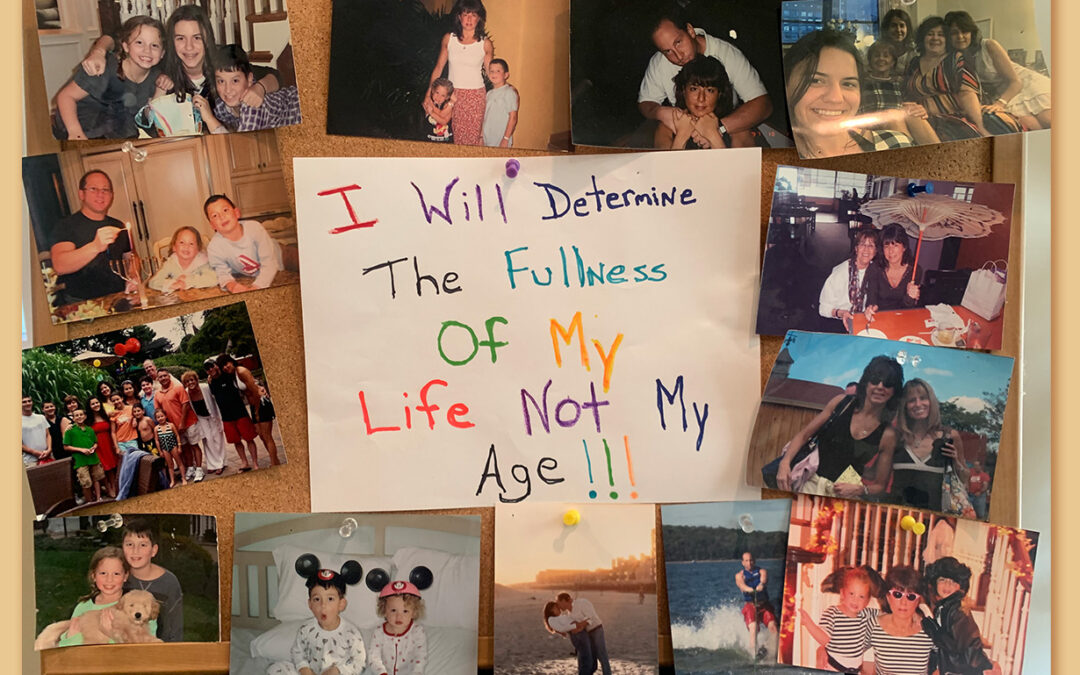
The Dreaded ‘Trifecta of Midlife’ (and what you can do about it)
Why Do So Many Women Feel Irrelevant In Midlife
I remember the first time it happened.
I was standing in line at the bagel store looking down at my phone, when a voice in front of me called out—
“Can I help you Ma’am?”
Huh?
I turned around —
And I’m thinking, ‘Who? Me? Ma’am?! Who’s ‘Ma’am?’
I was wearing sunglasses for heaven’s sake!
I’d just been working out. I had a vest on, my hair scrunched up on top of my head.
Wow. Is it my hair? Is it my posture? What is it about me that looks so much older? (Yup, all these thoughts flashed through my mind in a nanosecond.)
“Ma’am?!” (He was getting impatient now.) “How can I help you?”
So, I sighed. And took a step forward in line—both literally, and metaphorically.
Because somehow I’d moved up a notch.
I was officially middle aged.
And for a moment, that feeling my clients talk about so often flashed into my mind:
‘I feel invisible. And irrelevant.’
Now, I’m okay sharing this with you because I know you feel the same.
When?
Every time you look in the mirror, second guess your dress choice—and that inner critic screams ‘you’re way too old for that!’
Every time you glance down at your stretch marks, and pull that coverup over your bikini…
Every time you walk past a construction site—and don’t get wolf-whistled.
(C’mon… admit it! And yes, the feminist in me hated it too when I was younger.)
But all this is no surprise, because our youth obsessed society conditions us to believe that our relevance is attached to how attractive we are —
Or how much attention we get from men.
But here’s the thing…
While that may be one reason, to pin it all on this is to do ourselves a disservice. Because irrelevance in midlife is about so much more than mere attractiveness…
And in fact, after a decade of hearing my clients agonize over this, I can tell you it comes down to not 1, but 3 universal truths (and my own personal spin on it…)
So, let’s start from the top…
1. Our Youth Obsessed Culture
Washed up. Dried out. And my own personal favorite, ‘spinster.’
Yikes. Over the years there have been some damn offensive terms for a woman of a certain age (especially if she’d never been married).
And although those terms are outdated now, you could argue they’ve been replaced by something else—a youth obsessed culture that tells us we have so much less to give physically or sexually…
Our social media feeds are full of makeup, hair extensions, and tight dewy skin. Lunch hour ‘botox-breaks’ are the norm. Younger women snap at the heels of our career…
Whoa. It’s no surprise that many of us still think our relevance is defined by how attractive men find us.
Especially when you wake up and realize…
2. You Don’t Feel ‘Middle Aged’
Just like my bagel-boy example above, the truth is middle age creeps up on us—then slaps us in the face with a jar of Pond’s cold cream.
My point? It feels like only last week I was a ‘miss’—and now I’m a ‘Ma’am.’ (And an ex-runner turned Peloton obsessive, with two hip replacements to boot.)
WTAF?
Now, however middle-aged is ‘supposed’ to feel, I’m not feeling it. And neither is anyone around me…
(Heck, even Carrie Bradshaw and co are struggling.)
3. Your Life is Changing Up
Children leaving home, going to college and getting married…
Parents aging—and needing so much more from us…
Technology, AI and feeling like we can’t keep up…
Good and bad, wherever we look, the world—and our lives—are changing.
And when you throw menopause into the mix, well, you could say the very definition of midlife is ‘change.’
Physically and mentally, midlife throws so much more at us than we bargained for…
And that brings me to bonus point number 4, or my own personal take on this…
Your Way Forward Has Disappeared. And There Is No Roadmap…
Here’s the deal: most of us have spent our lives putting others first. We’ve been the perfect wife, mother or daughter for so long…
We’ve been to college, raised families, and had successful careers.
In fact, we’ve been spoon fed since day one what we should and shouldn’t be doing, how we can excel, how we should operate as women. And I strongly believe us Gen-Xers, the late baby boomers have had the worst of it.
In short? We’ve had many, many decades of putting ourselves in a box of what everyone else should expect us to do.
We’ve never tapped into our true, authentic self. We’ve never found out what our preferences might actually be. (Or we abandoned them for family and work.)
We’ve played nice and not ruffled any feathers.
And as a result? When our children leave home, or career changes up, we feel tired and irrelevant…
Our purpose has vanished…
And we find ourselves asking…
“Who am I anyway?”
Maybe this resonates?
Well, if it does, know this, you are definitely not alone. (In fact, I can’t tell you how many clients come to me with those exact same feelings.)
But here’s the deal: it doesn’t have to be that way. And it’s never too late to flip the script on this.
The Secret? Learn How To Invest in Yourself in Midlife
Now, don’t get me wrong. This isn’t easy when you’ve spent a lifetime thinking about the wants, needs and preferences of others…
But this is your time now.
And you must take these steps. Because every single woman I know who overcomes her feelings of irrelevance is invested in her own self development—they focus on their personal growth, they work out what their interests might be, they take up new hobbies.
They refuse to buy into our youth obsessed culture—because they know it’s just one narrative. Online, they follow women who inspire them, and light them up. They embrace an Experimental Mindset.
They know their world is there to be shaped, and they refuse to give in…
And second? They stay connected. They join clubs, and move amongst people who see them for what they truly are. They feel seen, heard, and relevant.
In fact, this is the exact reason I don’t feel irrelevant. (Well, at least until some young server dares to call me ‘Ma’am.’ 😉
Seriously now. I’ve done the legwork, I have exposure to so many tools to help me, and I’m lucky to be in this industry.
And the reason I don’t have that piece is because I’ve built a very strong sense of self.
I know who I am.
And I’m here to help you feel the same.
XO
Holly
P.S. If you’re reading this thinking, ‘but Holly, I’ve no idea what my own preferences and needs, wants and desires might be!’ My 10 Question Toolkit is a great place to start.



